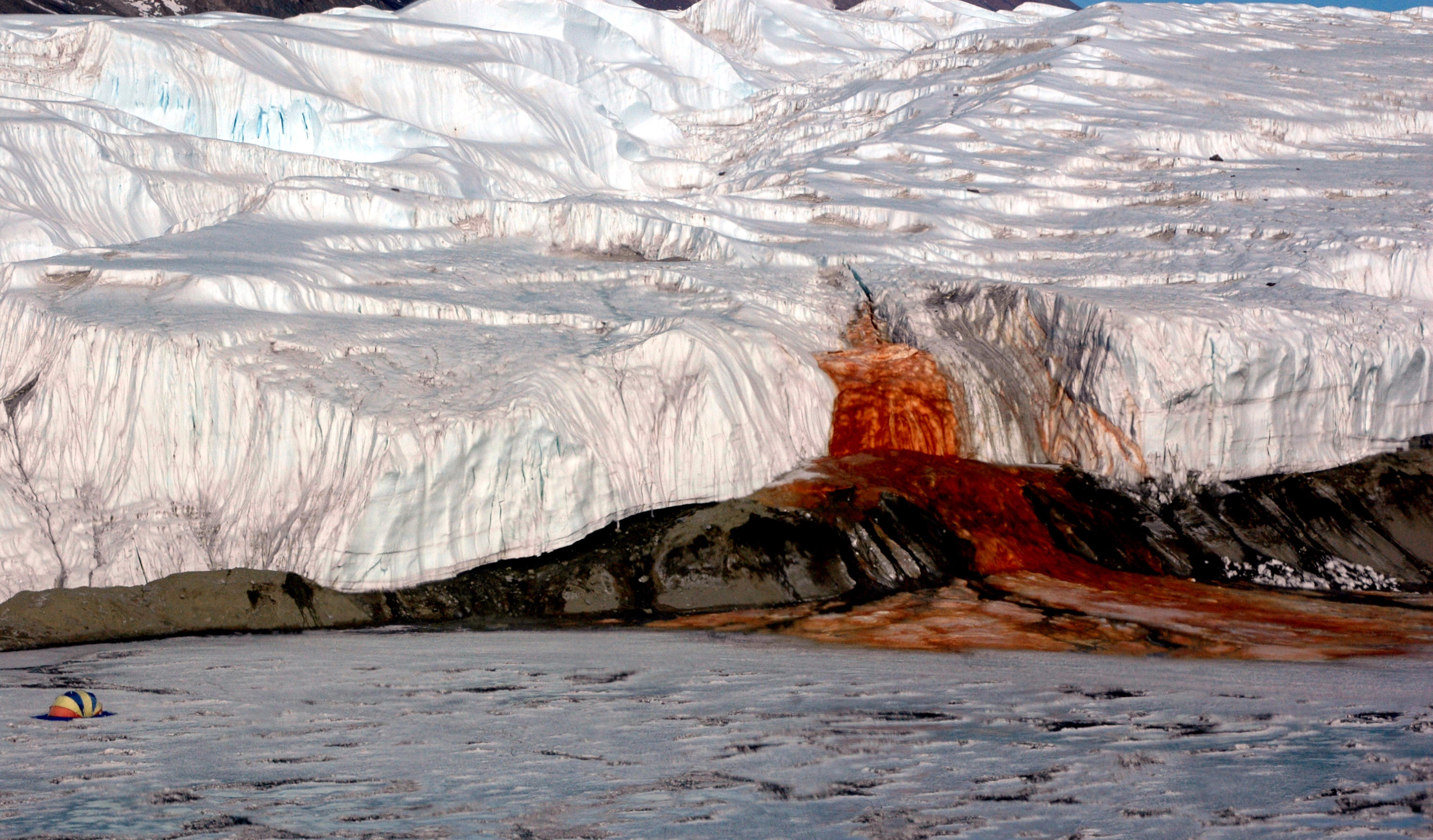 |
Blood Falls is a natural feature of the Taylor Glacier in
Antarctica. It is located in the McMurdo Dry Valleys at the edge of the
glacier. It pours out of glacier and into Lake Bonney. Its waters are the color
of blood, which is odd when you consider its surroundings. There is nothing
else in the area that matches its color. The glaciers and lakes are your
typical blues and whites and the valleys are brown where the wind has swept
away the snow.
Scientists, researchers and explorers have been pondering
the possible causes of the coloration of Blood Falls for some time now. Early
on, they thought that the color might come from algae. However, algae have
never been known to survive below a glacier, and Blood Falls’ source is beneath
the Taylor Glacier. Then there is the fact that the water is very salty. In
other words, it is seawater. What is blood red seawater doing pouring out of a
glacier in Antarctica?
Barry Lyons of Ohio State University and a team of
scientists did a decade long study of Blood Falls. At the study's conclusion,
Barry’s answer to the mystery of Blood Falls was that part of Taylor Valley was
once covered with a saltwater lake that had come in from Ross Sea. The iron in
the water had settled to the bottom of the lake and was later picked up by the
Taylor Glacier. Now the salty, iron-rich water is pouring out of the edge of
the glacier. This next theory is based on basically the same principle, but it
goes even further with the addition of something that may be even more
interesting than the falls themselves.
In early 2009, Jill Mukucki from Dartmouth’s Department of
Earth Studies released a paper regarding her research, and that of her
colleagues, on Blood Falls. In this paper, Jill basically agrees with Barry
Lyons about the source of the salt water beneath Taylor Glacier. However, the
paper’s explanation of the color is largely different. Jill and her colleagues
discovered microbes that live roughly 1,300 feet inside of the glacier. These
microbes supposedly feed on the iron in the seawater under Taylor Glacier. By
feeding on the iron, they help to break it down, which gives Blood Falls its
red coloring.
These microbes may have had ancestors that were ocean life.
They have apparently adapted to the lack of light (and many other things) within
the glacier. They have utilized the only real resource in Taylor Glacier–the
iron–and turned it into food. This is the first indication scientists have ever
seen that life can exist beneath a glacier.
Sources
(Note: article has been updated. These are the original sources from 2010.)
Blood Falls, Antarctica’s Dry Valleys, retrieved 1/17/10,
earthobservatory.nasa.gov/IOTD/view.php?id=35535
Unusual Antarctic Microbes Live Life on a Previously Unsuspected
Edge, retrieved 1/17/10, nsf.gov/news/news_summ.jsp?cntn_id=114488
Inmar,
Mason, April 16, 2009, Glacier “Bleeds” Proof of Million Year Old Life Forms,
retrieved 1/17/10, nationalgeographic.com/news/.../090416-blood-falls.html
No comments:
Post a Comment